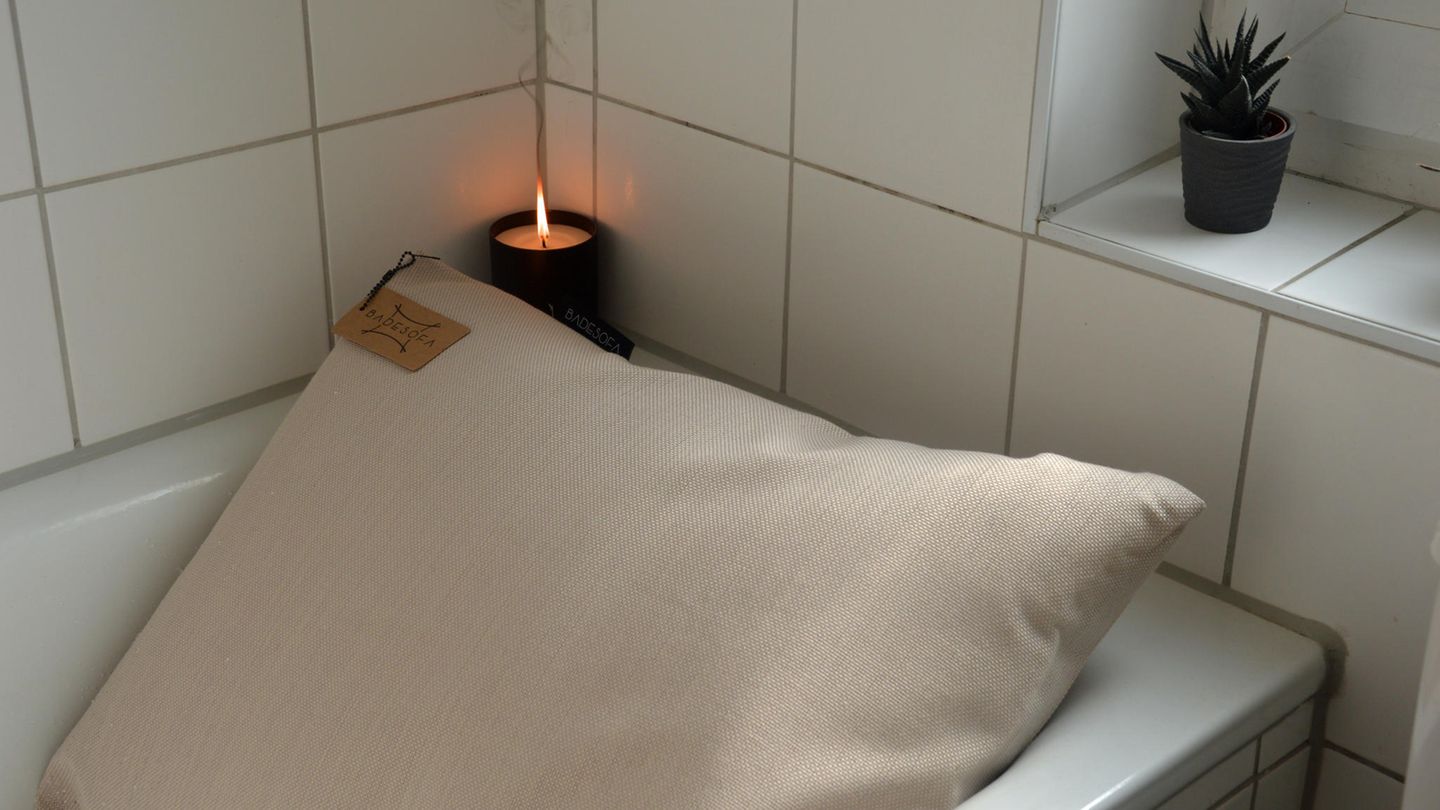More and more people are turning to facial rejuvenation without surgery: Dr. Sina Djalaei explains the different methods in an interview.
Botox injections, fillers or laser treatments – in the field of aesthetic medicine there has been a trend towards minimally invasive treatments for years. “The advantages of non-surgical procedures are obvious. As a rule, visible results are achieved immediately and you are immediately socially acceptable,” explains Dr. Sina Djalaei, owner of the private practice Avesina in Cologne and Düsseldorf.
It’s not about removing a single wrinkle or simply enlarging the lips. The holistic approach aims “to ensure that the treatments create a harmonious overall picture that is not limited to a single zone.” In addition, it is important to take not only the face into account, but also the entire lifestyle. “Unhealthy diet, lack of exercise, lack of fresh air, poor sleep and stress accelerate the aging process, impair well-being and reduce quality of life,” the cosmetic surgeon continues and explains in the interview about the various treatment methods but also possible risks and side effects.
Botox, filler and laser treatments – non-surgical methods of facial rejuvenation are becoming increasingly popular. How do you explain this trend?
Dr. Sina Djalaei: Since ancient times, people have strived to get the most out of their face and their beauty. The increasing trend towards minimally invasive procedures such as Botox, fillers or laser treatments is therefore not just a fad, but rather the result of technological advances and the wide range of modern treatment options. 30 years ago, such procedures were still unknown and there was therefore no option to carry out laser treatment, for example. Nowadays, however, the techniques have developed significantly and become firmly established, which is why more and more people are seeking such treatments.
Which non-surgical methods are currently particularly in demand?
Dr. Sina Djalaei: Botox and hyaluronic treatments are definitely the most in demand. The demand and number of procedures have increased steadily over the last 20 years.
What advantages do these non-surgical methods have over traditional facelift surgeries?
Dr. Sina Djalaei: The advantages of non-surgical procedures are obvious. First of all, you usually achieve immediately visible results and are immediately socially acceptable. With surgical procedures, however, it can take weeks or even months for the swelling to subside and the final result to become visible. In addition, the risk is significantly higher with surgical measures, especially due to anesthesia, wound infections and secondary bleeding, which can occur in some cases.
Another important point is that we are talking about aesthetic procedures that are not medically necessary. It’s not about treating a broken bone, but about elective surgery. If the result does not meet expectations, it is almost impossible to reverse it. This is one of the biggest problems for me, as even a technically flawless operation can lead to a result that the patient does not identify with. Not to mention the consequences of a poorly performed operation. In contrast, minimally invasive procedures such as Botox or hyaluronic acid treatments offer the advantage that if you don’t like the results, they will wear off and the products will break down in the body. Hyaluronic acid can even be specifically dissolved using Hylase.
You are one of the first representatives of the “holistic facial treatment”. What exactly does that mean?
Dr. Djalaei: My holistic concept – for women the “Facial Design” and for men the “Mascu Look” – is about not looking at the face in isolated zones. For example, many patients want fuller lips, a smoother forehead or less pronounced nasolabial folds. However, these wishes are often only small parts of a larger picture. If you only follow the superficial wishes of the patient, the result can appear disharmonious and disproportionate over time. So my approach is to first ask the patient’s needs, such as the desire to look more beautiful, fresher or younger. I then carry out a comprehensive facial analysis and explain which areas should be treated to fulfill this wish.
It’s not about removing a single wrinkle or simply enlarging the lips. As the lips become fuller, they need to be in balance with the cheeks, jawline and the entire face. The holistic approach aims to ensure that the treatments ultimately create a harmonious overall picture that is not limited to a single area. In this way we achieve that the entire appearance improves without losing its naturalness.
What are the biggest “problem areas” on the face?
Dr. Djalaei: The biggest problem areas on the face are often the sagging cheeks and the neck, which I refer to as my “final enemies”. Over the years, gravity pulls everything down, especially as the volume in the midface decreases. Therefore, the beauty contours and lines around the neck should be treated early to prevent sagging. When these contours are stable, a solid foundation is formed for a natural and fresh appearance.
I like to compare this with sports: While you can train your arms quickly, your stomach and bottom are more difficult. A flat stomach and a toned bottom are indicators of fitness and health. The contours of the face are similarly important – they form the basis for a well-groomed appearance. The lips and the appearance of tears are particularly technically challenging. There is often a risk of overcorrection, especially when tears appear, if you do not work precisely. The biggest challenge lies in precise treatment.
More and more men are also having minimally invasive beauty treatments. Which treatments are particularly in demand here?
Dr. Djalaei: Since men with wrinkles are often perceived as attractive, the focus here is usually on achieving a fresh and at the same time masculine look – ideally more striking. The cheekbones, chin line and jawline are primarily treated in order to emphasize masculine features and achieve firm, defined contours. Of course, for men, wrinkles and the appearance of tears can also be treated to give an alert impression and slow down the aging process.
How long do results typically last after treatment?
Dr. Djalaei: The results usually last one to two years. However, I recommend an annual refresher to keep the result constant and not have to start from scratch after two years. Depending on the initial status, it may be necessary to initially carry out several sessions to reach the desired level, after which regular annual refreshers are sufficient.
What risks or side effects need to be taken into account?
Dr. Djalaei: Possible risks include swelling and hematomas, which usually subside after a few days. In rare cases, intolerance or allergic reactions may occur. A very small risk is that an injection could block an artery, which could lead to skin necrosis. However, this usually does not occur if you have mastered the technique and know the anatomy well – so the treatments should always be carried out by an expert.
What important advice can you give to people considering non-surgical facial rejuvenation?
Dr. Djalaei: People who are interested in a non-surgical procedure should first find out extensively about which doctors are suitable and what services they offer. Gut feeling plays an important role, as does looking at before and after pictures, as beauty and naturalness are perceived subjectively. During the consultation, attention should be paid to how the treatment is carried out and how the doctor proceeds. Thorough research, obtaining other people’s experiences, and comparing results are crucial to ensure that the results meet your expectations.
To what extent can a healthy diet and lifestyle stop the aging process? Which factors accelerate the aging process?
Dr. Djalaei: The holistic approach that I always emphasize includes not only the comprehensive treatment of the face, but also consideration of the entire lifestyle. It makes little sense to treat the face perfectly if the patient has an unhealthy lifestyle. A holistic approach therefore also includes a healthy diet, regular exercise, enough sleep, fresh air, checking blood values, taking nutritional supplements if necessary and inner peace. These elements help you feel better overall, perceive your reflection in the mirror more positively and counteract the aging process.
Source: Stern
I am an author and journalist who has worked in the entertainment industry for over a decade. I currently work as a news editor at a major news website, and my focus is on covering the latest trends in entertainment. I also write occasional pieces for other outlets, and have authored two books about the entertainment industry.




